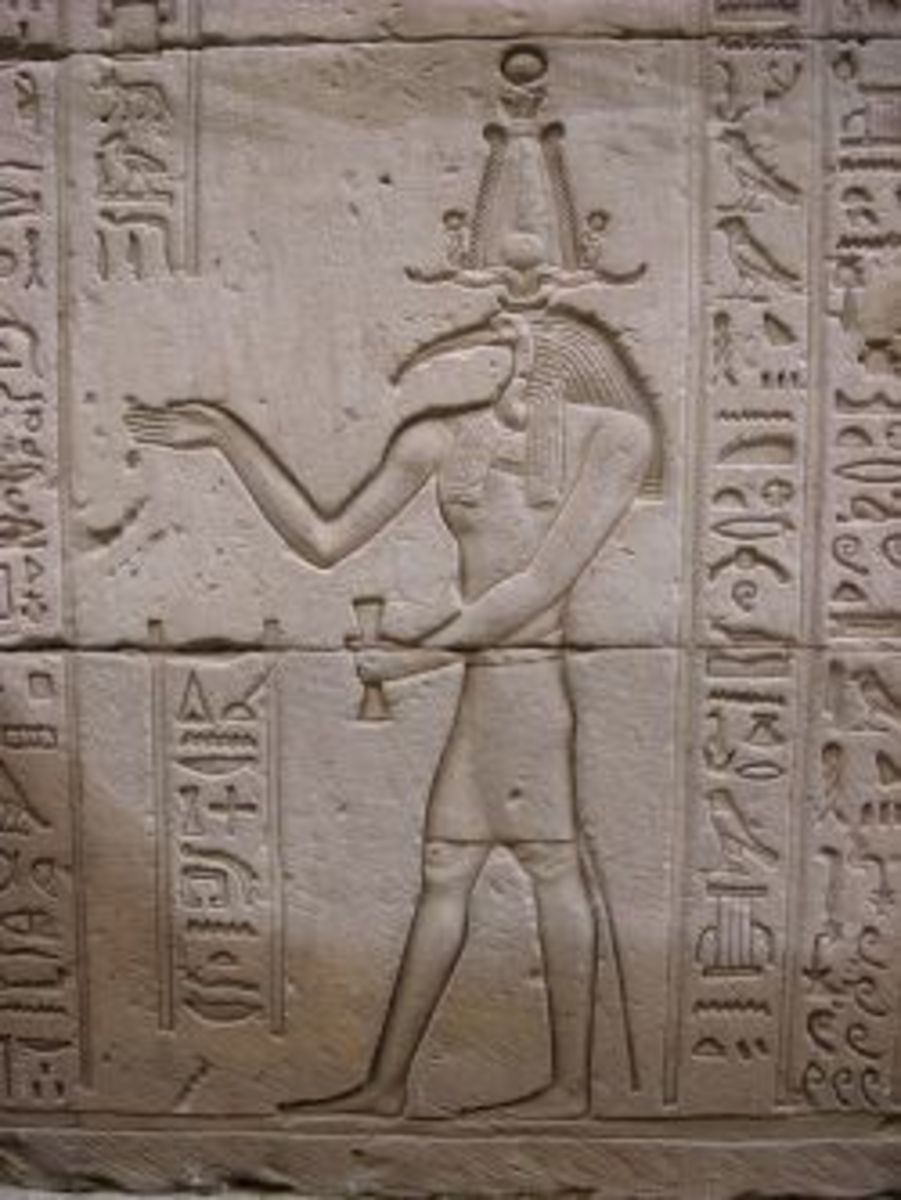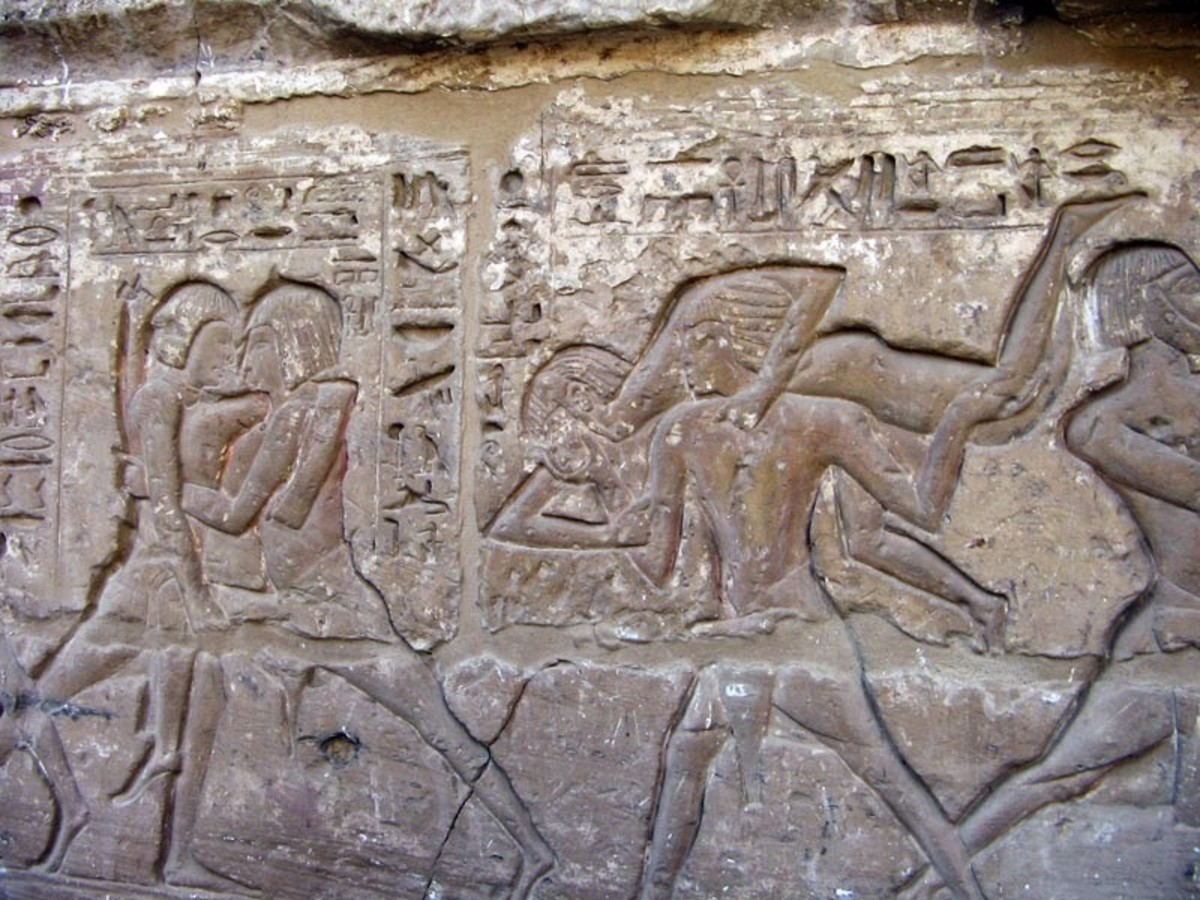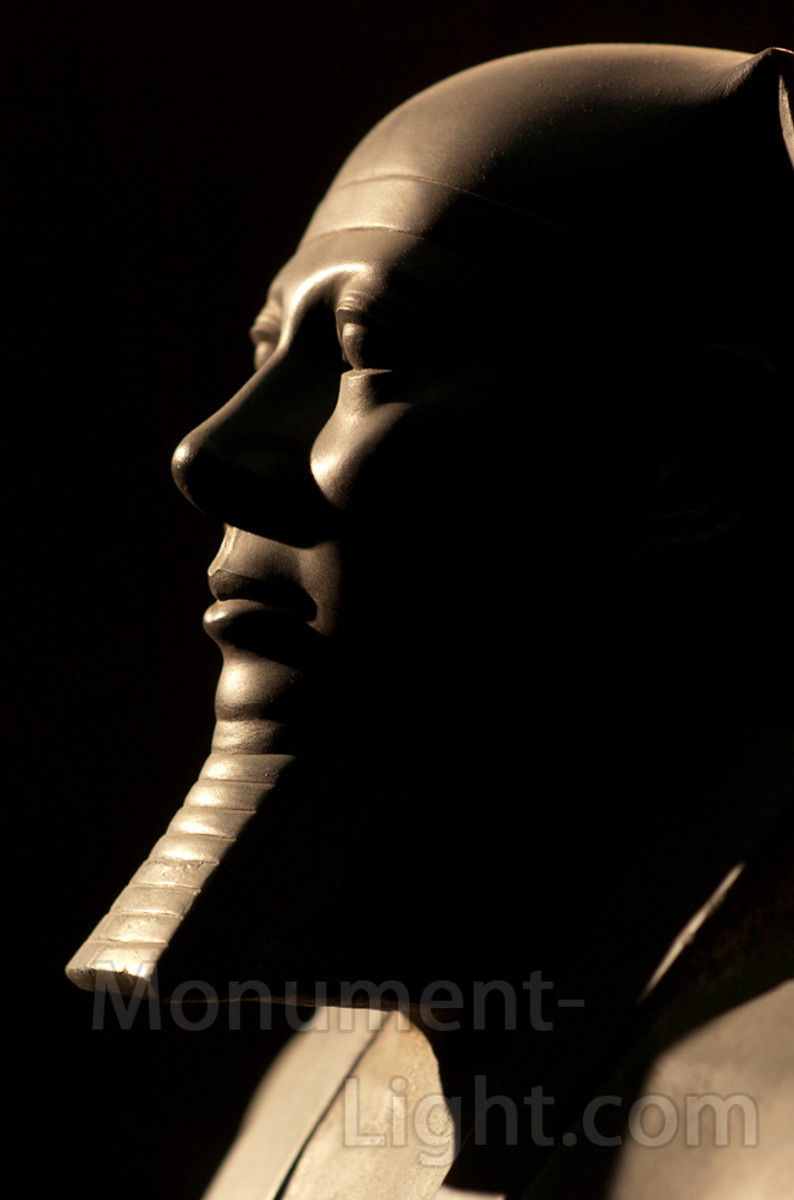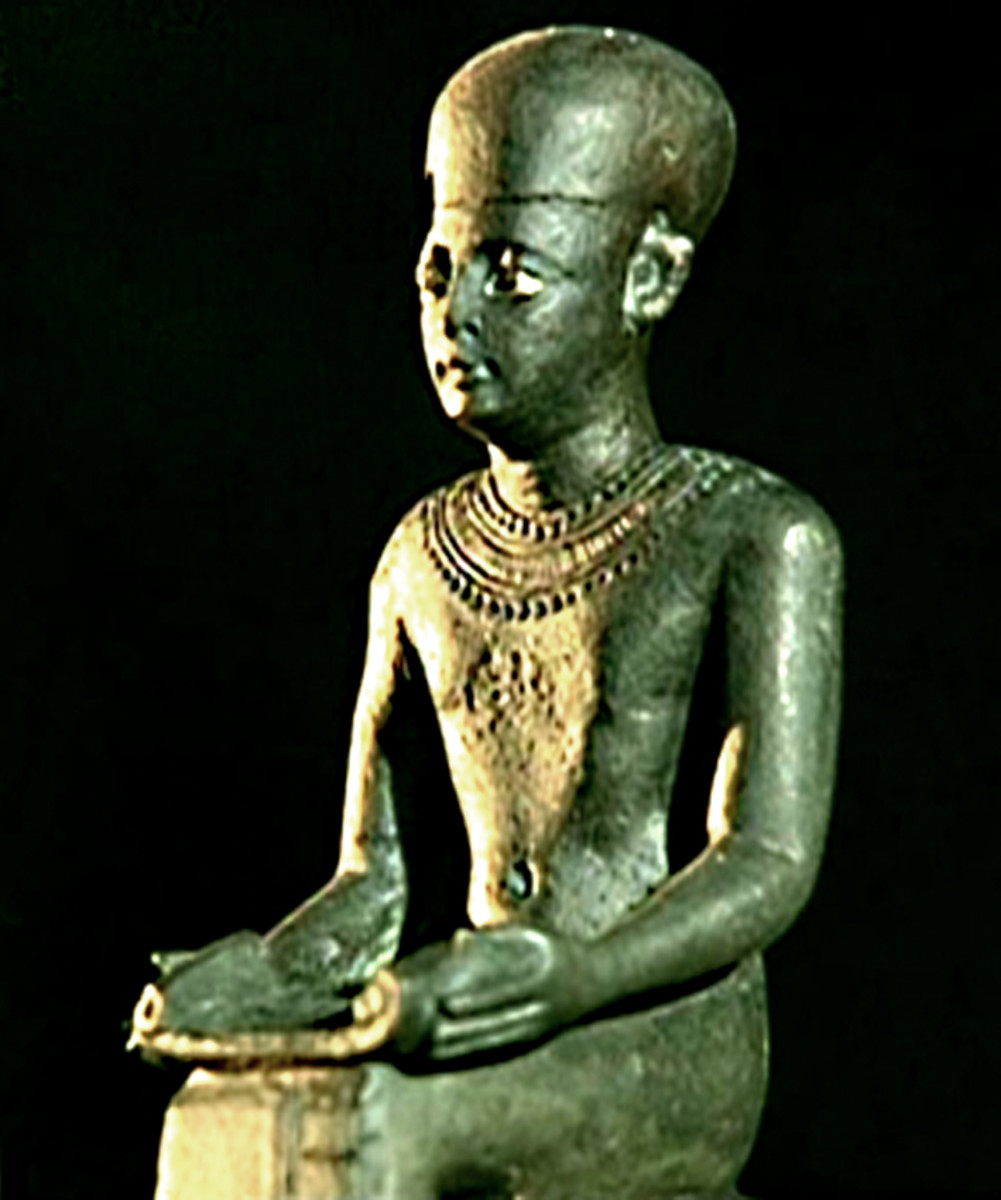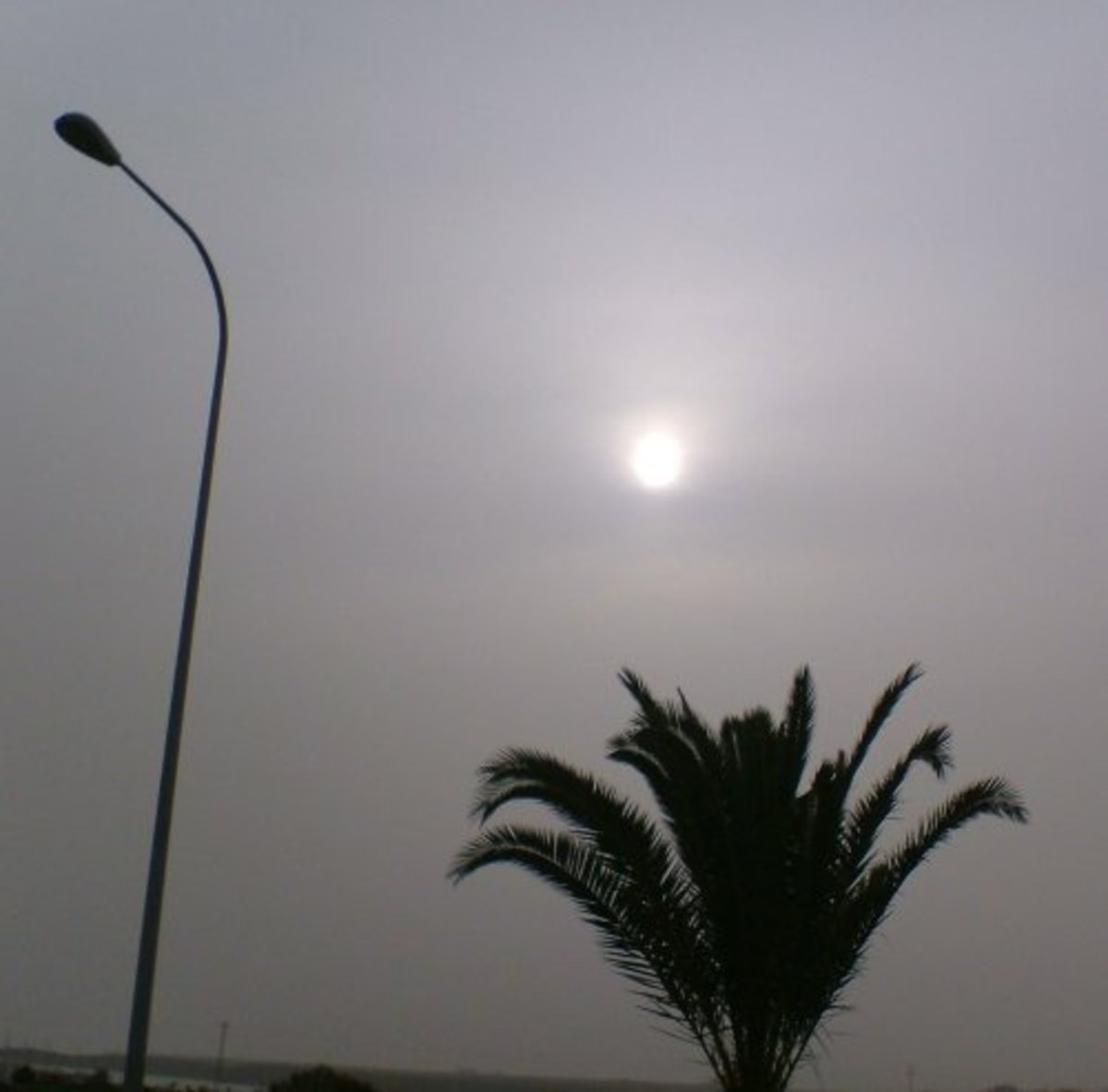- HubPages»
- Travel and Places»
- Visiting Africa»
- Travel to Northern Africa
The Golden Mask of King Tutankhamon and The Egyptian Museum of Antiquities
The Egyptian Museum of Antiquities
I have evaded crazy drivers in downtown Manhattan and hot Kingston city in the Caribbean island of Jamaica, but the Russian roulette driving in the centre of Cairo befuddles the mind even for me. My driver is very comfortable and eases himself through the chaos into the left lane to head for the Egyptian Museum of Antiquities. There we shoot pictures of the exterior as much as we like but once we are ready to enter the building I must leave my camera with security, and that’s how I ended up doing a little pen sketch of King Tutankhamon’s great golden mask. No photographs allowed inside.
Our Egyptian guide Ayman suggests we take a few minutes to walk around the sculpture garden at the front of the museum. The museum itself is a large pink building which houses the very treasures of Egypt, over 120,000 pieces.
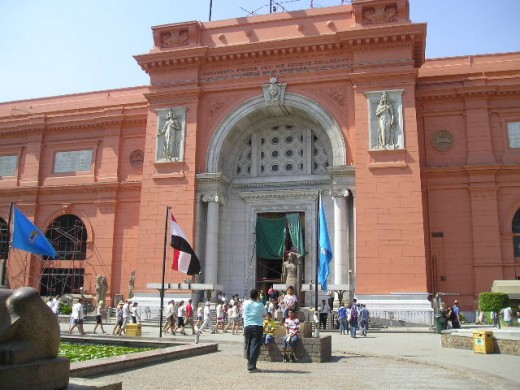
I am assured by my guide that the items on display in the garden and inside the building are original artefacts, no replicas, except for the Rosetta Stone, which we’ll discuss later. He declares that 80% of all monuments on the planet are to be found in Egypt.
Egypt is such a very special place.
Museum Tour
The exhibits are displayed on two floors and we begin on the ground floor with a lesson in pharaonic art. The king god is shown in three poses:
1. Military march. He stands left foot slightly forward, hands at side with documents of office in clenched fists.
2. Sitting. He sits as ruler.
3. Mummy. Hands crossed and feet together. Two variations on this theme. If the beard is not bent than it is for worship but if the beard is bent then it shows pharaoh after death.
The ancient artists worked in variety of media such as granite, limestone, sandstone, and basalt. The aim of Egyptian art was perfection.
An example of high detail and great finishing is the triad of King “Men Kau Ra” usually called Menkaure or Mycerinos. He is the 4th Dynasty builder of the third pyramid at Giza. In this polished greywacke piece he is standing in the military pose of the pharaoh and is flanked by the goddess Hathor and a local female deity.
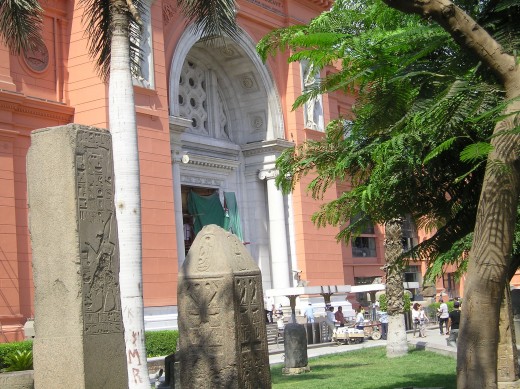
Life and Death in Ancient Egypt
Life after death was the primary existence for the ancient Egyptians. Once the king was crowned he began to make preparations for the journey in to after life. They had no means of photography so their perfect depiction of their pharaoh was an attempt to assist the soul to identify the face since the spirit was believed to live in the face. The statues could be life size or even colossal.
We are shown the Narmer Palette, a famous slate and the oldest known document from ancient Egypt. It is a thin, two- sided artefact on which are inscribed drawings and writing to show the great event of the unification of Egypt, on one side, the king of the south of Egypt, Narmer, is seen smiting the king of the north; the opposite side depicts King Narmer wearing the crown of the north walking in a procession of victory.
Ancient Egypt was very democratic, all colours and sizes were part of national life. Statues of dwarfs are on display. Some of them were very wealthy and played important roles in antiquity.
Mummification and burial
Burial rites involved mummification and the funerary activities which covered 70 days involved the mummification of the body as well as manufacture of masks, caskets, and sarcophagus.
The jackal headed god of mummification is Anubis who is featured on tombs. The body is cut at the sides and the organs removed, the heart is washed and replaced in the body, the other organs dried and placed in a set of four vessels. The body is soaked in a salt solution. The cavities are stuffed with special aromatics and other materials.
In later periods the brain was also removed from the skull through the nasal opening.
In some cases the Book of the Dead was stuffed into the side. Finally the body was wrapped with the white linen (now you are remembering the famous Hollywood scenes right?) and sealed with a resinous substance. A mummy mask was placed over the wrapped head. One or several coffins are placed in the sarcophagus. The afterlife needs of the tomb owners were provided by placing ushabtis, statues of persons performing many tasks.
Why did they choose the pyramid shape? We don’t know everything about pyramids. There are pyramids all over the world. And not all kings of ancient Egypt were buried in the pyramids. But the well preserved tombs which included the pyramids have served to preserve the Egyptian record of life.
This is the reason that today we know so much about ancient Egypt, the rites and art devoted to the life after death. One interesting exhibit showed a shopping list for food which was placed in the tomb.
Pharaohs were not the only persons who were mummified. Our guide spent a moment showing us a mummy mask of a beautiful woman which was commissioned by her husband. The art work was lifelike. As said before, the lifelike depiction of features was essential for the ka, the soul to inhabit the body after death.
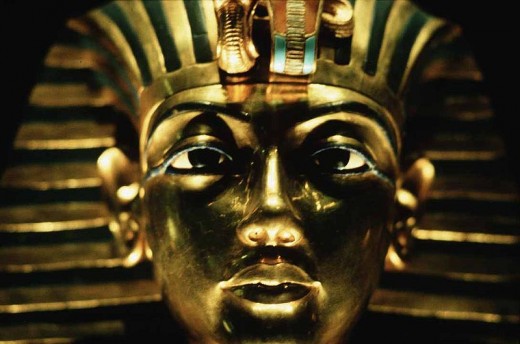
The Glorious Legacy of the Boy King Tutankhamon
The King Tut room was the highlight of the museum tour. Guides were not allowed in the special room in which this famous image is on show.
The golden funerary mask of King Tutankhamon is regarded by many as the single greatest piece of art ever created by mankind. It is embedded with precious stones such as turquoise, lapis lazuli, and carnelian. The cobra and vulture represents Upper and Lower Egypt. Carter's team had to go through three coffins to see the king’s famous mask, but each coffin bears a similar mask with hand crossed in mummy fashion. The alabaster canopic box was divided into four compartments, each containing one of the internal organs of the king; each organ placed in a miniature coffin of beaten gold.
Wife and I walked past the throne with its two lion heads gazing at anyone approaching the king. The throne was decorated with king and his wife Ankhesenamon, she is offering him a cup or about to massage him, and they are so in love they are wearing the same pair of sandals, she wears the right foot.
Four large gilded wooden shrines protected the stone sarcophagus, and the curators have sought to show how the shrines were like a four layered container, an optical illusion which works by showing you a smaller shrine reflected in the glass partition of its neighbour so as to appear as if it is inside, the way Howard Carter’s team found it in 1922.
Inside the sarcophagus Carter found three golden coffins, within the last was the mummy covered by its golden mask.
The irony of Tut is that he was, according to our guide, the luckiest pharaoh of Egypt. Lucky because his tomb has so far been the only one found intact. Grave robbers have made off with most of the treasures of ancient Egypt but the sands covered the glory of Tut until Carter’s donkey kicked into the yielding sands of the Valley of the Kings in 1922.
Treasures from his tomb included ornate chairs, his beds including a folding bed, various headrests, his canes, alabaster lamp, royal chariots and interestingly his underwear of linen. His actual mummy lies in one of his coffins in his tomb in the Valley of Kings.
We spent the rest of the time on the second floor encountering artefacts from ancient Egypt that were in use in the 1800, from household utensil, to ox-drawn ploughs, to fishing hooks to toys and games like the senet, and various sizes of dice. Sailing, cooking, farming, weaving, and using the bathroom all seemed as civilised in antiquity in the Nile bound desert bordered heat of northern Africa.
The Rosetta Stone
Descending the stairs we return to the ground floor and almost passed the shameful replica of the Rosetta Stone, shameful because our guide took no pleasure in its non-original status. The original is now in the British Museum. The Rosetta Stone was the key which unlocked the meaning of the ancient hieroglyphic script for modern scholars.
Discovered by the French officer Bouchard in 1799, near Rashid (Rosetta), the document is a royal inscription in hieroglyphic, demotic, and Greek. In 1824, a young French scholar from Grenoble by the name of Jean Francois Champollion would crack the riddle of the hieroglyphs because of the trilingual presentation of the decree.

